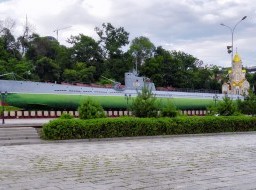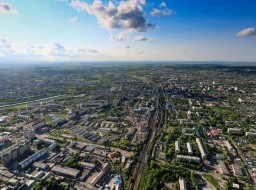"Millionka" district
There is an area consisting of a few blocks of red brick buildings, arches, balconies, and nooks built at the end of 19th century in the heart of historical Vladivostok that holds a lot of juicy secrets. It is called "Millionka". “Millionka” was the common name for the “Chinatown” that grew up in the nineteenth century in the Russian Far East city of Vladivostok – around the time of the end of the First World War some reports say that 30% of Vladivostok’s population was Chinese. Nowadays this district, near the port and where once Chinese and Korean junks moored, has the same streets but some of them have been damaged and destroyed – it was considered a rat run of businesses, laundries, restaurants, gambling parlours, threatre and opera houses, brothels, lodging houses and opium dens – the Tsarist authorities and later the Soviets both considered it a slum, a den of iniquity and a nest of thieves and criminality controlled by gangs and with the police afraid to enter. Soldiers from the First World War and then Whites looking to flee Russia all crowded around the opium dens and brothels of Millionka as Russia saw decades of chaos. In 1914, a reported 1,243 crimes occurred in the district alone. amazingly the area survived, in somewhat muted form, into the Soviet Union era. In 1936 Stalin ordered the area “liquidated” and all Chinese deported. However, at its height, around 1900, Millionka was a labyrinth of alleys housing perhaps as many as 50,000 Chinese in what was roughly the size of two New York City blocks. This may be a conservative figure for the density – one history cites 100,000 Chinese in Millionka plus another 10,000 Koreans. Riots and strikes in 1905 saw the place torched partly and there were regular brawls with Russian sailors, among the gangs of the district and with the authorities. Nowadays it is a place for walking, featuring abundant cafes, art galleries, and conceptual graffiti that attracts many people, especially artists. |











